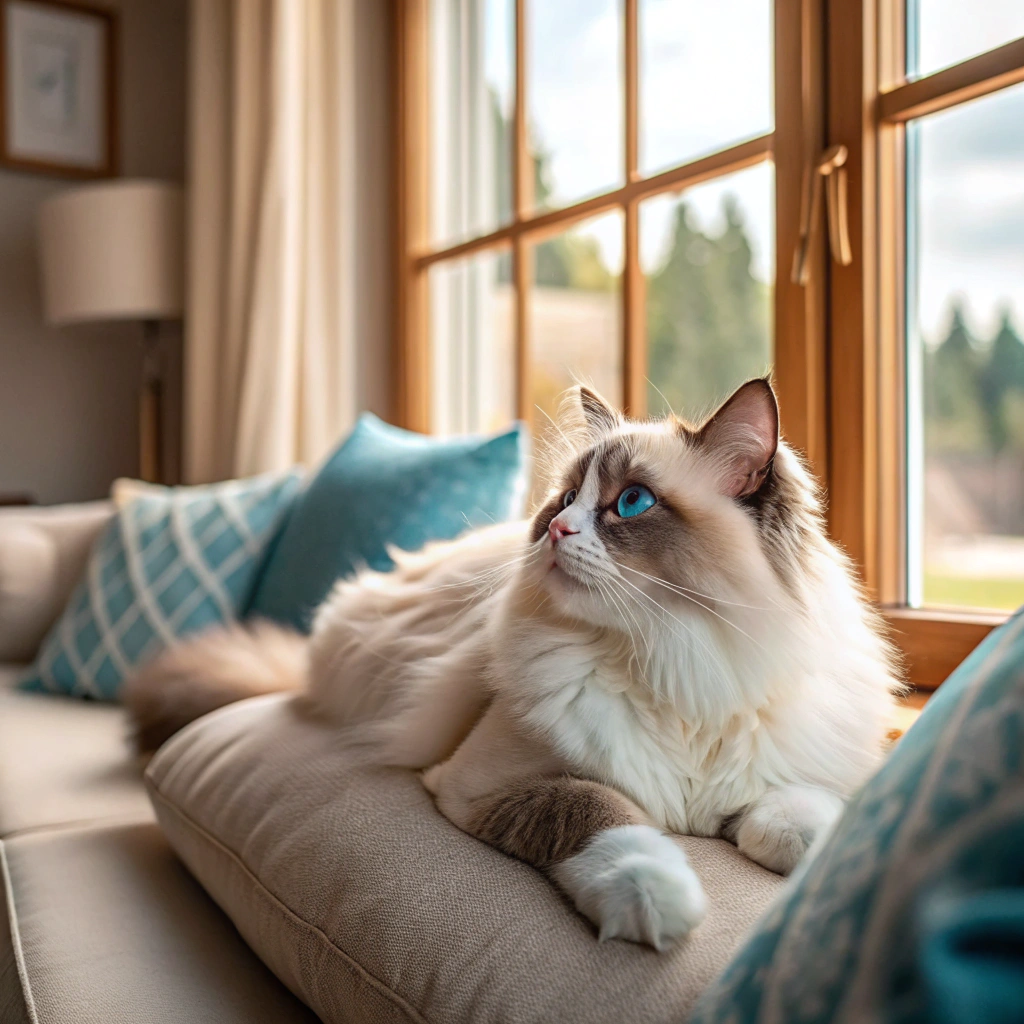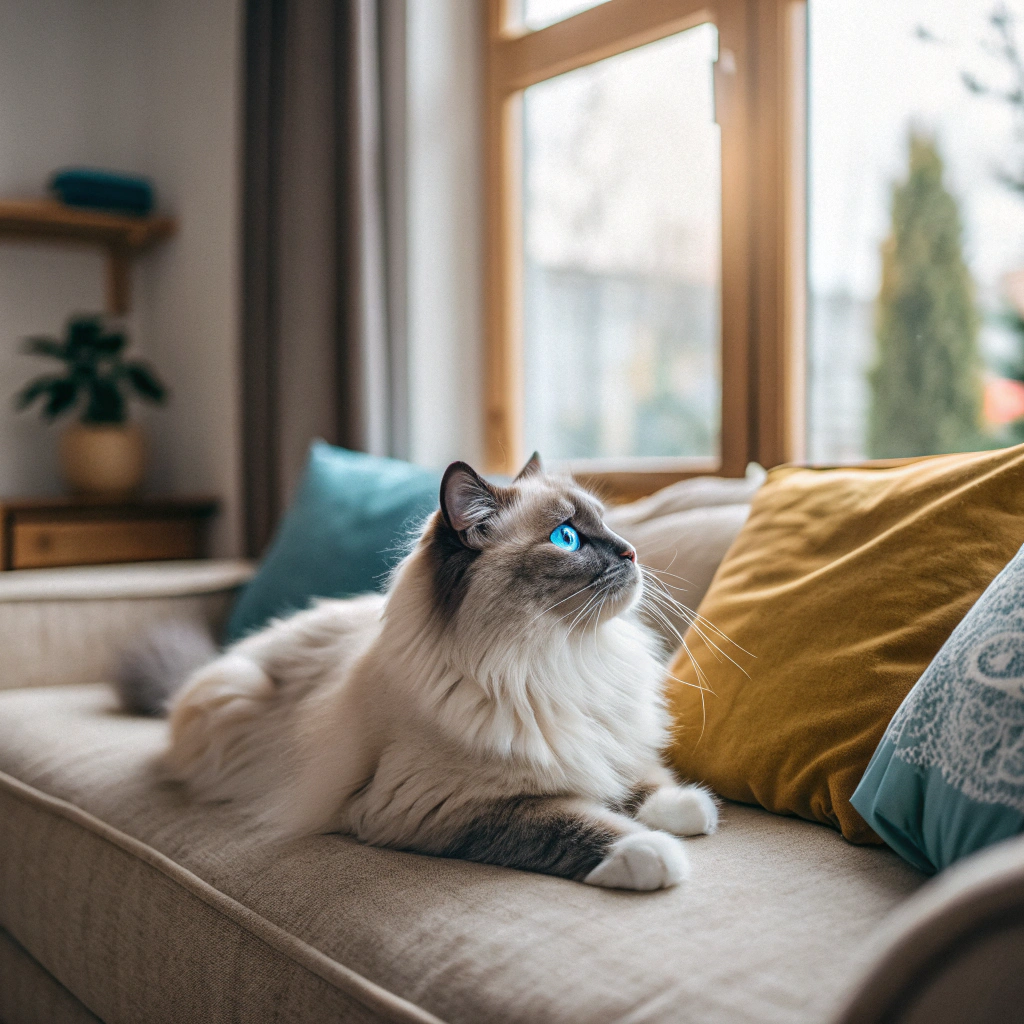Discover the charm of Ragdoll kittens and cats in this complete guide. Learn about their origins, personality, care needs, health, and why they make affectionate lifelong companions.
Ragdoll kittens and cats are among the most captivating felines in the world. With their striking looks, calm temperament, and affectionate nature, they have secured a place as one of the most beloved cat breeds. Their gentle demeanor and loyalty often surprise those who expect aloof behavior from cats. Whether you are considering adopting a kitten or are already living with one, understanding the Ragdoll breed will deepen the bond you share with this extraordinary companion.
The fascinating history behind the Ragdoll cat
The Ragdoll breed traces its beginnings to the 1960s in Riverside, California. A breeder named Ann Baker is credited with developing the breed through a series of selective pairings. She noticed that one of her cats, Josephine, produced unusually calm and affectionate kittens with silky coats. These offspring exhibited a peculiar trait—when picked up, they would go limp, almost like a ragdoll.
How the breed got its name and signature traits
This unusual tendency inspired the name “Ragdoll.” While the floppy nature is not always universal, it remains a defining element of the breed’s lore. Alongside this characteristic, breeders worked to enhance their docile temperament, large size, and striking blue eyes, ensuring the Ragdoll would stand apart from other cats.
Key milestones in the development of the breed
From its American roots, the breed gained global recognition in the 1980s. The Cat Fanciers’ Association (CFA) and The International Cat Association (TICA) both recognized the Ragdoll, cementing its reputation as a pedigreed breed. Today, Ragdolls are cherished worldwide, consistently ranking among the most popular cats due to their beauty and serene disposition.
Striking blue eyes and signature silky coat
Perhaps the most captivating feature of the Ragdoll is its sapphire-blue eyes. These vivid orbs contrast beautifully with their semi-long, silky coats. Their fur resembles rabbit down, soft to the touch and less prone to matting compared to other long-haired breeds.
Size, weight, and overall body structure
Ragdolls are among the largest domestic cats, with males often weighing between 6–9 kg and females slightly lighter. They possess a muscular, sturdy frame with a long body and a full, plumed tail. Despite their size, their movements are graceful, complementing their calm personality.
Common coat colors and patterns
The breed comes in several traditional color variations, including seal, blue, chocolate, lilac, red, and cream. Patterns often include colorpoint, mitted, and bicolor. Each Ragdoll’s coat evolves as they mature, with kittens typically being born white and developing their colors gradually over the first few years of life.
Gentle giants: why Ragdolls are known as the “puppy cats”
Ragdolls are frequently described as “puppy-like” because of their inclination to follow their owners from room to room. Their gentle demeanor and loyalty make them feel less like independent cats and more like devoted companions.
Affectionate behavior and love for companionship
Unlike some breeds that demand independence, Ragdolls thrive on human interaction. They enjoy being held, stroked, and even carried, often relaxing completely in a person’s arms. Their need for closeness makes them excellent pets for those seeking a warm and constant presence.
How Ragdolls interact with children and other pets
Ragdolls are particularly well-suited for families. Their patient temperament makes them tolerant of children’s energy, and they typically coexist peacefully with other cats and even dogs. Their social nature ensures they rarely lash out, making them one of the safest breeds for households with multiple pets.
Preparing your home for a new kitten
Before bringing home a Ragdoll kitten, it is essential to create a safe environment. Remove hazards such as toxic plants, loose wires, or small objects they might swallow. Provide a quiet space where your kitten can retreat during the first days of adjustment.
Feeding requirements for growing Ragdolls
Kittens require high-quality, protein-rich diets to support their growth. Because Ragdolls are large cats, they have longer growth periods compared to other breeds. Balanced meals with controlled portions ensure they develop strong muscles without becoming overweight.
Essential health checks and vaccinations
Regular veterinary visits are critical during kittenhood. Core vaccinations, parasite prevention, and routine health screenings safeguard their development. Early monitoring also helps detect any breed-specific conditions.
Socialization and early training tips
Early exposure to household routines, sounds, and gentle handling builds confidence in Ragdoll kittens. They respond well to positive reinforcement, making litter training and learning household rules relatively smooth.
Grooming routines for their semi-long coat
While their coat is less prone to matting, weekly brushing helps maintain its silkiness and reduces shedding. Grooming also strengthens the bond between cat and owner.
Exercise needs and playtime enrichment
Ragdolls are not overly active, but they do enjoy play sessions. Interactive toys, climbing trees, and puzzle feeders keep them engaged and prevent boredom. Their calm nature makes them adaptable to indoor living, provided they receive adequate stimulation.
Managing common health concerns in the breed
Ragdolls are generally healthy, but they can be prone to hypertrophic cardiomyopathy (HCM), a hereditary heart condition. Responsible breeders test for this gene. Regular checkups and a balanced lifestyle minimize risks.
Creating a comfortable home environment
Soft resting places, warm nooks, and scratching posts create the perfect haven for a Ragdoll. They relish comfort and will often choose the coziest spot in the house to lounge.
Why they make excellent indoor cats
Ragdolls are best suited for indoor living. Their trusting personality leaves them vulnerable outdoors, where they may not recognize danger. Indoors, they thrive as affectionate, calm companions.
The bond between Ragdolls and their families
These cats forge unusually strong connections with their owners. They wait at doors, curl beside you on the couch, and even follow bedtime routines. Their devotion is a defining trait that sets them apart.
Emotional benefits of owning a Ragdoll
Ragdolls often bring comfort and calm to their households. Their affectionate presence has been described as therapeutic, reducing stress and creating an atmosphere of tranquility. When seeking a Ragdoll kitten, select breeders who prioritize health, temperament, and genetic testing. Ethical breeders provide pedigree documentation and allow prospective owners to meet the kittens and parents.

Questions to ask before adoption
Prospective owners should ask about vaccinations, health screening, diet, and socialization practices. Understanding these factors ensures a smooth transition into your home. For those who prefer to offer a second chance, rescue groups and shelters occasionally have Ragdolls available. Adopting an adult cat can be deeply rewarding, particularly for families seeking a calmer companion.
Ragdoll kittens and cats embody elegance, affection, and serenity. From their mesmerizing blue eyes to their endearing loyalty, they are companions that bring joy to every household. Whether you adopt a playful kitten or a mature rescue, welcoming a Ragdoll into your life means gaining a devoted and gentle friend for years to come.
F A Q
Do Ragdolls like to be held and cuddled?
Yes, most Ragdolls enjoy being carried and cuddled. They often melt into your arms, living up to their name.
Are Ragdolls hypoallergenic?
While no cat is truly hypoallergenic, Ragdolls may produce fewer allergens than some breeds. Individuals with allergies should still test their tolerance before bringing one home.
How long do Ragdoll cats typically live?
With proper care, Ragdolls live between 12 to 17 years. Some have even been known to surpass this range, thanks to their sturdy constitution and indoor lifestyles.
Do Ragdolls shed a lot compared to other breeds?
Ragdolls do shed, especially during seasonal changes. However, their coat is easier to manage than that of other long-haired breeds. Regular grooming minimizes shedding and keeps their coat pristine.

